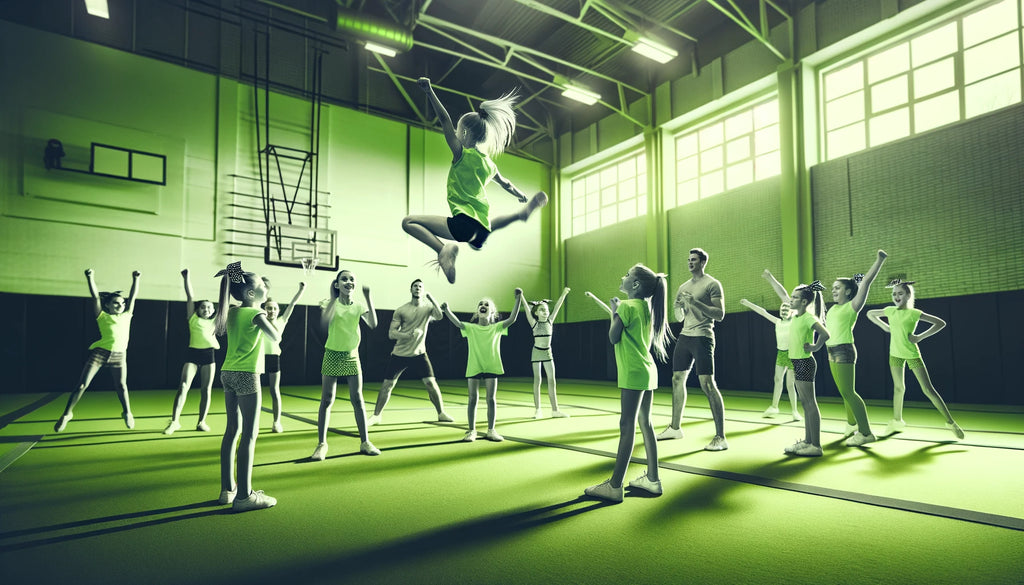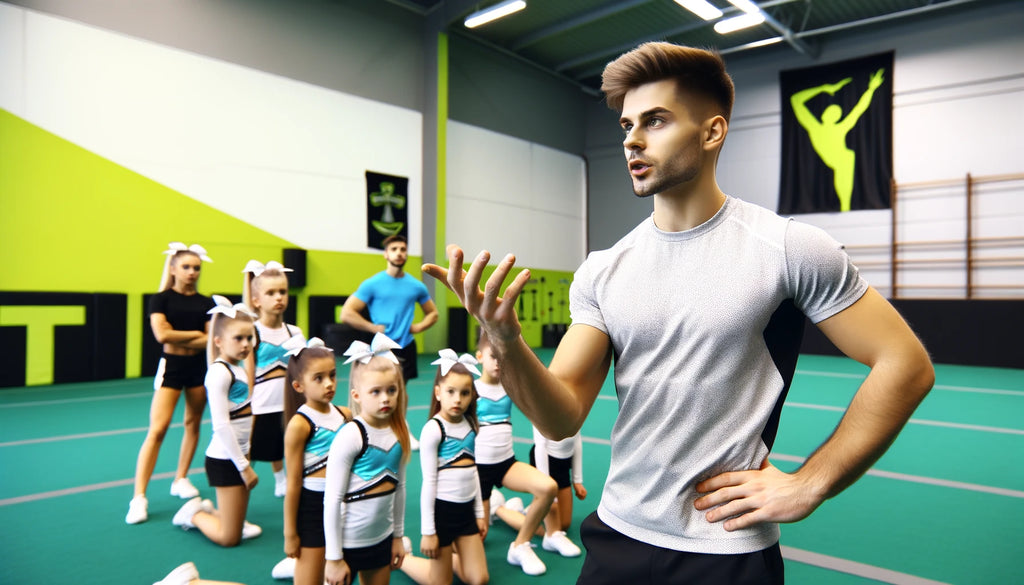Optimal Start: Determining the Best Age for Girls to Begin Cheer
Cheerleading is a dynamic and engaging sport that combines elements of gymnastics, dance, martial arts, and teamwork. It has evolved significantly over the years from a sideline activity to a highly competitive sport that requires athleticism, dedication, and skill.
Parents and younger athletes alike often wonder about the ideal age to start cheerleading, especially for kids who show an early interest in the sport. This article aims to explore various aspects of cheerleading, focusing on the best age for girls to begin their journey in this vibrant sport.
The Best Age to Start Cheerleading
Determining the best age for a child to start cheerleading can depend on various factors, including the child's interest, physical readiness, and emotional maturity. Generally, children can begin cheerleading as young as ages three to six years old, participating in "tiny team" classes or "show team" programs designed for kids. These programs focus on the young kids developing basic skills, body awareness, and a love for the sport without the pressure of competitive cheerleading. Some participate start at an older age, which can have injuries and slow skill levels down; of course there are exceptions for natural talent and a good coach, which is always a good sign.
Introduction to Competitive Cheerleading
As children grow older, around the age of six to eight, they may transition to more structured cheerleading programs that introduce them to competitive cheer. Competitive cheerleading demands more commitment and offers a focus on developing higher-level skills, teamwork, learning a routine, avoiding injury, and participating in cheerleading competitions. They might even consider becoming a competitive dancer instead of a cheerleader, which is equally as demanding. This stage is crucial for building a strong foundation in the sport, with the coach often emphasizing the importance of hard work, and discipline.

Young Age: Starting the Cheer Journey
Initiating cheerleading at a younger age offers a unique blend of fun, learning, and physical activity. For parents considering cheer for their children, understanding the benefits and considerations of starting at a younger age is crucial. It's not merely about your child learning to be cheerleader but about fostering a positive environment where younger kids can grow, learn, and thrive both as athletes and individuals.
The Significance of Early Exposure to Cheerleading in Young Athletes
Starting cheerleading at a younger age allows children to immerse themselves in a sport that is as much about individual achievement and competition as it is about team success. Early exposure to cheerleading teaches children the importance of cooperation, listening skills, and mutual respect among the child and the coach and teammates involved. These are not just cheerleading lessons; they are life lessons that contribute to a child's social and emotional development.
Cheer programs and classes for children focus on developing fundamental physical skills such as balance, coordination, and flexibility. These skills are essential for cheer but also transferable to other sports and activities. Engaging a child in sports and cheerleading from a young age lays the foundation for a healthy, active lifestyle and instills a love for physical activity.
Participating in cheerleading and gymnastics can have a profound impact on a child's self-esteem and confidence. Young cheerleaders learn to perform in front of an audience, which can significantly enhance their self-confidence and public speaking skills. Moreover, the team-based nature and practice of cheerleading and gymnastics fosters strong social connections, teaching children the value of friendship, and support.

Competitive Cheerleading Competitions: A Step Up
As children progress in their cheerleading journey, competitive cheerleading becomes an option. This level of cheerleading is more than just about performing routines; it's about pushing limits, striving for excellence, and experiencing the thrill of competition.
Transitioning to Competitive Cheer
The transition from recreational cheerleading to competitive cheer is a significant step for many teams and athletes. It requires a greater commitment in terms of time, effort, and focus. Competitive cheer teams work towards perfecting routines that include stunts, jumps, tumbling, and dance, aiming to showcase their skills at cheerleading performances.
The Challenges and Rewards of Competitive Cheer
Competitive cheerleading and gymnastics is challenging, both physically and mentally. Kids involved must dedicate themselves to regular practice, work on their fitness, and continuously improve their skills. However, the rewards are equally significant. Success in competitions can boost kids' confidence, teach them the value of work and perseverance, and provide a sense of achievement that is unparalleled. Even for a tiny team or show team still learning basic tumbling.
The Role of Coaches and Parents
In the world of competitive cheerleading, the role of coaches and parents becomes increasingly important. Coaches are responsible for training kids of all ages, developing routines, and ensuring the team's advancement. Parents, on the other hand, provide the team with the necessary support and encouragement, helping their children navigate the challenges and celebrate the successes of competitive cheerleading.

Cheerleading Beyond the Basics
As cheerleaders advance in their skills and age, they encounter opportunities to teach and specialize kids in certain aspects of cheerleading, such as tumbling, stunting, or dance. This specialization allows kids to look on what they love most about cheer while continuing to contribute to their team's success. This is more than just pom poms, unless of course that's what they enjoy.
Specializing allows cheerleaders to hone their skills in specific areas, becoming experts in tumbling, stunts, jumps or dance routines. This focus can lead to more significant individual development and a more substantial contribution to the team's overall performance.
Preparing for High School and College Cheerleading
For many young cheerleaders across age groups, the ultimate goal is to join a high school or collegiate cheer team. Specializing and developing advanced skills at a younger age can set the foundation for achieving these goals. High school and college cheerleading programs often look for a cheerleader who not only have a strong cheerleading background but also exhibit leadership and a commitment to excellence.

Conclusion: The Cheerleading Journey
Cheer is a sport that offers something for everyone, from young children taking their first steps into the sport to competitive athletes aiming for national championships. Starting cheer at a young age provides a foundation of physical and social skills, and confidence, that can benefit a cheerleader throughout their lives. As cheerleaders grow and develops, the opportunities to specialize, compete, and achieve in the world of cheer grow with them. Whether it's making lifelong friends, developing a strong work ethic, or simply enjoying the thrill of competition, cheer has the power to shape lives and create lasting memories.
Cheerleading is more than just a sport; it's a journey through life full of growth, challenge, and joy. It's about pushing yourself to be the best you can be, using new skills, supporting your team, and enjoying every moment of the journey. Being a good cheerleader does not mean you have to have the best skills, it means commitment, discipline, and working together while showing leadership. Having a kid look up to you shows you are doing what you need to do and a good influence to a younger generation.
For any young kid wondering when the best age to start cheer, the answer is simple: the best time to start is now. With the right approach, cheer can be a rewarding and transformative experience, offering endless opportunities for fun, friendship, and personal growth. In retrospect, starting cheerleading early is wise, but joining later in the game is ok too just because we all have a love for the sport. No matter what, or when they started cheering, being a cheerleader is for everyone.

